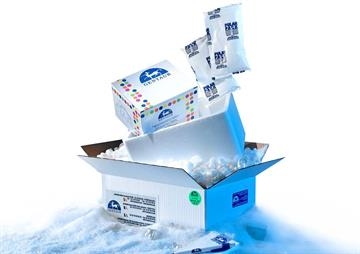IL-2 Recombinant Protein

IL-2 Recombinant Protein
596.65 €
In Stock
quantity
product details
Catalog number: 223 - 40-243-001mg
Product Category: Business & Industrial > Science & Laboratory
ProSciGentaur
Size: 0.01 mg
Related Products
96-652
ROR 2 Recombinant Protein
Tyrosine-protein kinase transmembrane receptor ROR2 is also known as Neurotrophic tyrosine kinase, receptor-related 2 (NTRKR2), which belongs to the protein kinase superfamily and Tyr protein kinase family and ROR subfamily. ROR2 is a homodimer protein, which can binds YWHAB or interact with WTIP. ROR2 may be involved in the early formation of the chondrocytes. It seems to be required for cartilage and growth plate development.
1106.95 €
96-821
Angiopoietin-2 Recombinant Protein
Angiopoietin-2 is also known as ANGPT2, AGPT2, ANG2, and is a secreted glycoprotein that plays a complex role in angiogenesis and inflammation. Ang2 is widely expressed during development, but it is restricted postnatally to highly angiogenic tissues such as the placenta, ovaries, and uterus. It is particularly abundant in vascular endothelial cells (EC) where it is stored in intracellular Weibel Palade bodies. Both Ang2 and the related Angiopoietin1 (Ang1) are ligands for the receptor tyrosine kinase Tie 2. Ang2 functions as a proangiogenic factor, although it can also induce EC death and vessel regression. Upon its release from quiescent EC, it regulates vascular remodeling by promoting EC survival, proliferation, and migration and destabilizing the interaction between EC and perivascular cells. Ang2 is required for postnatal vascular remodeling, and it cooperates with Ang1 during lymphatic vessel development. It mediates the upregulation of ICAM1 and VCAM1 on EC, which facilitates the adhesion of leukocytes during inflammation. Ang2 competitively inhibit Ang1-induced endothelial cell responses mediated by Tie2, and reduces vascular integrity. But the role of Ang2 is controversial since the opposite outcomes has been reported in other studies. Over-expression of Ang2 disrupts the vascular remodeling, induce endothelial cell apoptosis, and may play an important regulating role in tumor angiogenesis. Ang2 also promotes the neuronal differentiation and migration of subventricular zone progenitor cells.
1314.85 €
96-927
Nectin-2 Recombinant Protein
Poliovirus receptor-related 2 (PVRL2) is also known as nectin-2 and CD112 (formerly herpesvirus entry mediator B, HVEB), which is a human plasma membrane glycoprotein. PVRL2 is one of the plasma membrane components of adherens junctions. PVRL2 also serves as an entry for certain mutant strains of herpes simplex virus and pseudorabies virus, and it is involved in cell to cell spreading of these viruses. Variations in PVRL2 gene have been associated with differences in the severity of multiple sclerosis. Also, PVRL2 binds with low affinity to TIGIT. Furthermore, PVRL2 acts as a receptor for herpes simplex virus 1 (HHV-1) mutant Rid1, herpes simplex virus 1 (HHV-2) and pseudorabies virus (PRV).









